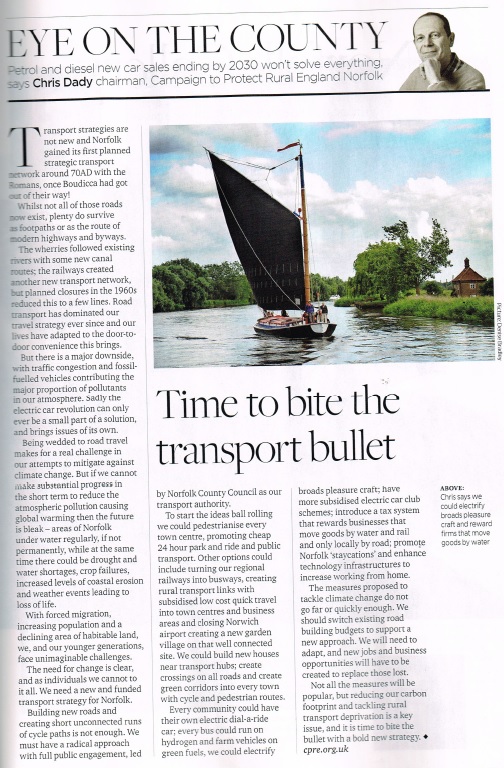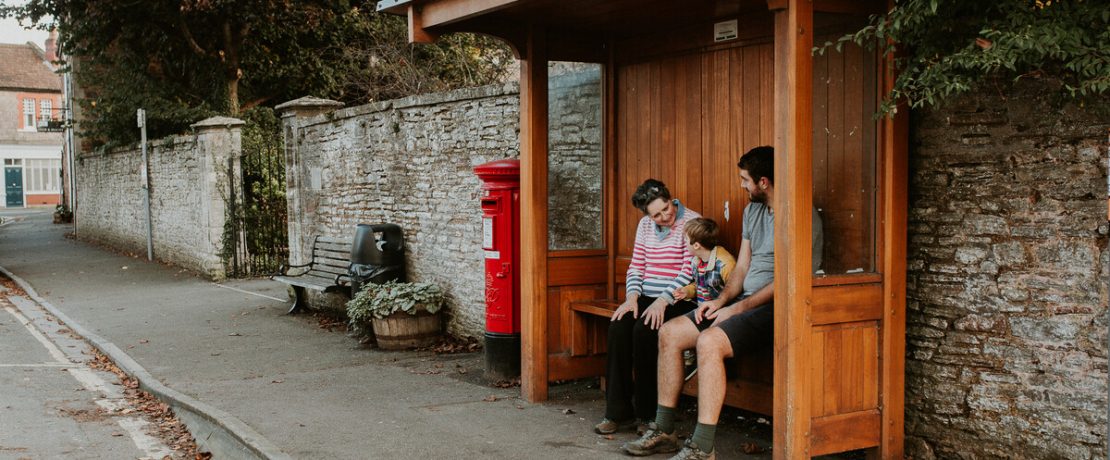Time to bite the transport bullet
Petrol and diesel new car sales ending by 2030 won’t solve everything, says Chris Dady. We need to bite the transport bullet with a new and funded transport strategy for Norfolk.
Transport strategies are not new. Norfolk gained its first planned strategic transport network with the Romans around 70 AD, once Boudica had got out of their way!
Whilst not all of those roads still exist, there are plenty that do survive as footpaths or as the route of modern highways and byways.
The wherries followed existing rivers with some new canal routes. The railways created another new transport network, but planned closures in the 1960s reduced this to a few lines. Road transport has dominated our travel strategy ever since, and our personal and business lives have adapted to the door-to-door convenience this brings.
But there is a major downside, with traffic congestion and fossil-fuelled vehicles contributing the major proportion of pollutants in our atmosphere. Sadly, the electric car revolution can only ever be a small part of a solution and brings issues of its own.
Being wedded to road travel makes for a real challenge in our attempts to mitigate against climate change. For many people, the options to let them move away from vehicle transport simply do not exist. But if we cannot make substantial progress in the short term to reduce the atmospheric pollution causing global warming then the future is bleak. Areas of Norfolk under water regularly, if not permanently, at the same time drought and water shortages, crop failures, increased levels of coastal erosion and weather events leading to loss of life.
With forced migration, increasing population and a declining area of habitable land, we, and our younger generations, face unimaginable challenges.
The need for change is clear, and as individuals we cannot do it all. We need a new and funded transport strategy for Norfolk.
Building new roads and creating short unconnected runs of cycle paths is not enough. We must have a radical approach with full public engagement, led by Norfolk County Council as our transport authority.
To start the ideas ball rolling we could pedestrianise every town centre, promoting cheap 24-hour park and ride and public transport. Other options could include turning our regional railways into busways, creating rural transport links with subsidised low-cost quick travel into town centres and business areas and closing Norwich airport creating a new garden village on that well connected site. We could build all new houses near transport hubs; creating crossings on all roads encouraging safe movement for those not in a vehicle; creating green corridors into every town with cycle and pedestrian routes.
Every community could have their own electric dial-a-ride car; every bus could run on hydrogen and farm vehicles on green fuels. We could electrify broads pleasure craft; have more subsidised electric car club schemes; introduce a tax system that rewards businesses that move goods by water and rail, not air, and only locally by road; promote Norfolk ‘staycations’ and enhance technology infrastructures, e.g. better broadband, to increase working from home.
The measures proposed to tackle climate change do not go far or quickly enough. Transport is a key factor, and we should switch existing road building budgets to support a new approach. We will need to adapt, and new jobs and business opportunities will have to be created to replace those lost.
Not all the measures will be popular but reducing our carbon footprint and tackling rural transport deprivation is a key issue, and it is time to bite the bullet with a bold new strategy.
This column was published in the January 2021 edition of the Norfolk Magazine.










